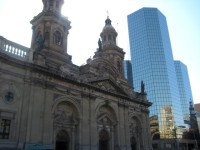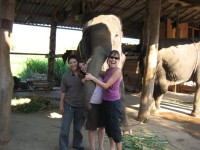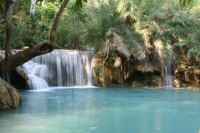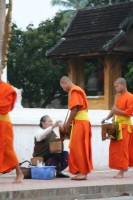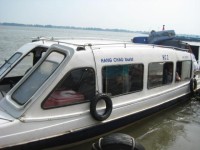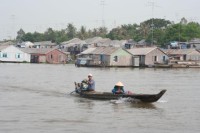Having lived in cities all of my life, I’ve rarely been in areas remote enough to really view the stars. Like many people, I’m fairly ignorant of space. Other than a basic understanding of how the earth rotates and the ability to point out a couple of constellations on a clear night, I’ve generally chosen to ignore the world above because prolonged reflection on space tends to freak me out.Â
The Atacama Desert, located in Northern Chile, is a world-class destination for astronomers due to its remote location and perpetually clear skies. On the first night of our arrival in San Pedro de Atacama, the small town that plays home to the desert, we looked up into the sky in amazement as thousands of stars appeared before us. The next day, we signed up for a star-gazing tour led by a French astronomer, Alain Maury, who came to the desert to view the stars and never left.Â

Because the sun sets late in Chile at this time of year, the tour didn’t start until 11 p.m. After a short ride out of the metropolis (population less than 2,000!) of San Pedro de Atacama, we arrived at the small country house owned by Alain and his wife. After a quick introduction, Alain began a brief overview of the sky and fortunately answered many of my very stupid questions before I had the chance to ask them.
A few minutes later, we were outside in the cold desert staring in disbelief at the stars above. With a slick, green laser pen, Alain was able to point out specific stars and constellations. For the first time in my life, I was actually able to see the Milky Way, the galaxy in which the Earth resides. The arc of clustered stars was so obvious in the desert sky that it seemed imposssible that I’ve gone my entire life without seeing them before.
A few feet from his house, Alain has six massive telescopes pointed to different areas of the sky. We took our turns bending down, and in some cases climbing ladders, to peer through the eyepieces at the radiant sky. As pointed out by Alain, the light from the stars we were viewing (traveling at 186,000 miles per second) had taken several years to reach the spot where we were. A few seconds of contemplation of this fact was all I could handle at 12:30 in the morning.Â

The oddest moment came when we approached the telescope pointed at the planet Saturn. Expecting to see a blurry image of this distant planet, we were instead greeted with a picture of Saturn that had to have been a cut-out from a piece of paper. The image was so clear (the picture to the right doesn’t do it justice) and Saturn-esque (?) that I truly believed it was part of a cruel joke played by the Frenchman. After questioning him, he confirmed that we were not the first doubters, but the image was true.Â
After some hot chocolate and a wrap-up from our teacher, we headed home around 1:30 am having a greater understanding of our planet’s surroundings but also a greater feeling of insignificance as only a minuscule piece of this massive universe.
